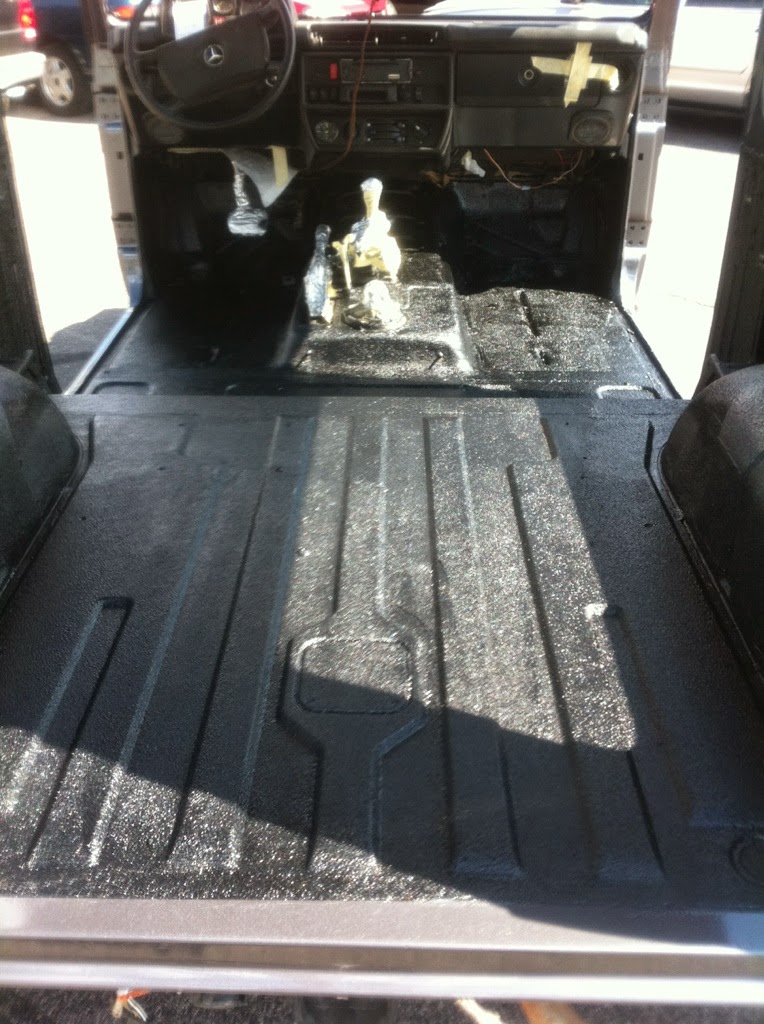My kids love heated seats - maybe it is just the lights on the switch. Every car time they get in the car during the winter, they go for the button! I never used them that much but can kind of see their point when it is super cold. So I thought, "My seats are being reupholstered, I wonder how hard it would be to add the heating elements to the seats?"
Turns out not that hard and not that expensive!
 I did a little research and found a kit had everything I needed to retrofit my seats all for less than $70. The kit came with two pads for each of my front seats, switches, relay, cable and fuses. I ordered the kit and took the heating elements to the upholstery shop to be installed before putting on the new leather.
I did a little research and found a kit had everything I needed to retrofit my seats all for less than $70. The kit came with two pads for each of my front seats, switches, relay, cable and fuses. I ordered the kit and took the heating elements to the upholstery shop to be installed before putting on the new leather.
Then I started working on the wiring. The switches could be mounted in the center console and had cool indicators for high and low settings. The thing is they don't look like the G-Wagon switches. Turns out if such things matter to you, the original MB switch will work. Vlad at Four by Four Club sells just about every switch made, but I could not find the seat heater switch. Turns out he sells a retro fit seat heater kit as well. For $185 he he will sell you a kit that does one seat.
I called Vlad and he sold me just the switches for about $75 each. Now you don't need these switches, but the mount in the dash with a little cutting and look stock.
I tied in the power to the ignition so the seats only worked when the ignition is on because they can draw quite of bit electricity and leaving them on will drain the battery.
I finished the wiring, ran the cables from the dash, down under the center console to the seats. When the seats came in, I simply mounted the relay under the seat and plugged them in being careful to dress the wires so they were clear of all the moving parts. They worked real well.
Now on the cold days, I just reach up on the dash and the cold leather turns warm when it gets hot, I turn it down to the lower setting. Heck, I may even use them in the summer!
Turns out not that hard and not that expensive!
 I did a little research and found a kit had everything I needed to retrofit my seats all for less than $70. The kit came with two pads for each of my front seats, switches, relay, cable and fuses. I ordered the kit and took the heating elements to the upholstery shop to be installed before putting on the new leather.
I did a little research and found a kit had everything I needed to retrofit my seats all for less than $70. The kit came with two pads for each of my front seats, switches, relay, cable and fuses. I ordered the kit and took the heating elements to the upholstery shop to be installed before putting on the new leather. Then I started working on the wiring. The switches could be mounted in the center console and had cool indicators for high and low settings. The thing is they don't look like the G-Wagon switches. Turns out if such things matter to you, the original MB switch will work. Vlad at Four by Four Club sells just about every switch made, but I could not find the seat heater switch. Turns out he sells a retro fit seat heater kit as well. For $185 he he will sell you a kit that does one seat.
 |
| W460 Heated Seat Switches |
I called Vlad and he sold me just the switches for about $75 each. Now you don't need these switches, but the mount in the dash with a little cutting and look stock.
I tied in the power to the ignition so the seats only worked when the ignition is on because they can draw quite of bit electricity and leaving them on will drain the battery.
I finished the wiring, ran the cables from the dash, down under the center console to the seats. When the seats came in, I simply mounted the relay under the seat and plugged them in being careful to dress the wires so they were clear of all the moving parts. They worked real well.
Now on the cold days, I just reach up on the dash and the cold leather turns warm when it gets hot, I turn it down to the lower setting. Heck, I may even use them in the summer!
































